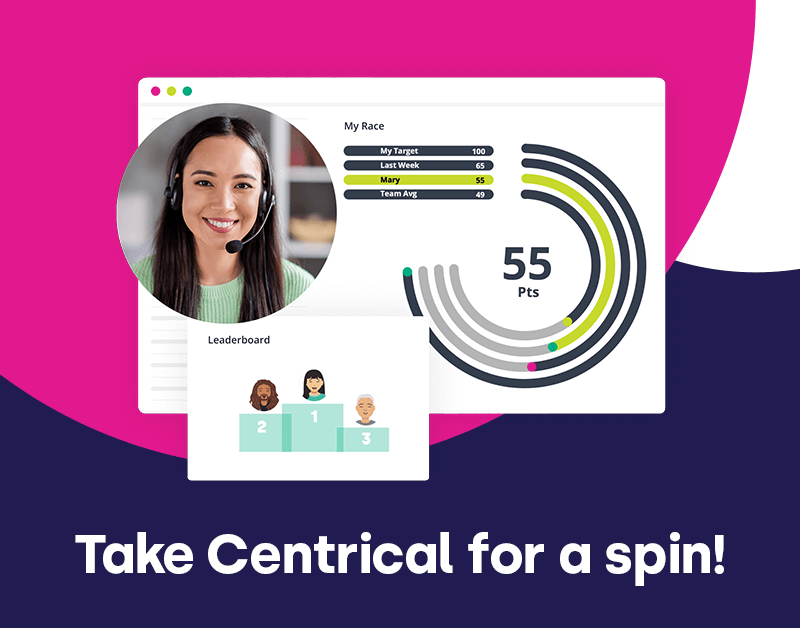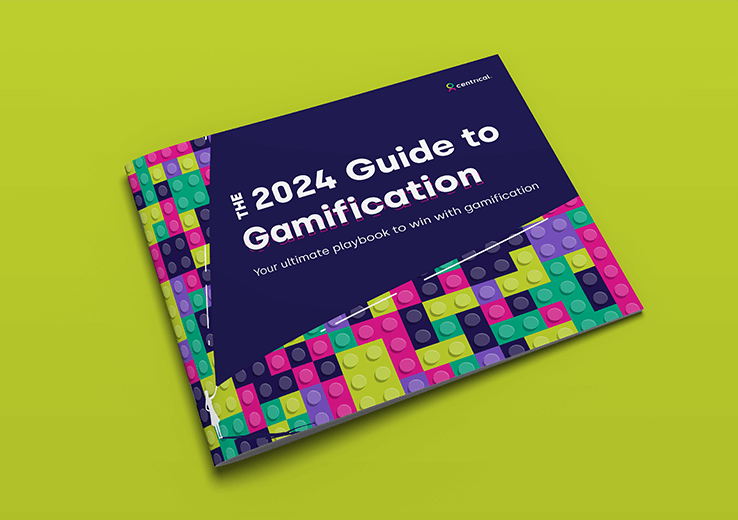Step-up Your Game – Session #1: Introduction to Gamification Fundamentals – Webinar Recap
During our recent webinar session with Professor of Instructional Technology at Bloomsburg University and gamification-guru, Karl Kapp, we focused on fundamental gamificaition terms and concepts. We discussed what gamification is, and, just as importantly – is not, showed how it can be tied directly to business objectives, and reviewed a number of case-studies
Below is a summary of that discussion.
What Gamification is, and, just as importantly – is not
Despite gaining wide-spread, mainstream recognition, Gamificaiton still elicits a certain level of uncertainty from executives and operational personnel. Tending to conflate it with simple recreational games, decision-makers are often surprised to learn the true definition of gamification:
The use of game-based mechanics, aesthetics and game thinking to engage people, motivate action, promote learning and solve problems.
Or, in more practical terms, gamification involves putting a game layer over things that typically don’t have a game.
Because they are closely linked, it is important to make the distinction between gamificaiton and plain games. Executives worried their employees will be wasting their time playing Candy-Crush are justified in their concerns, so long as the lines between productive gamification and recreational games remain blurred.
Therefore, before we touch on gamification and its benefits, it is critical we single out what it is not:
- Gamification does not equal playing games and slacking off at work. Everyone should strive to create an enjoyable work experience. Playing games may constitute as an experience; however, the work element is not addressed in this context…
- Gamificatoin does not equal trying to make work fun. Research has shown that employees can be engaged with a gamification platform, and benefit considerably, without reporting that the experience was “fun”. Implementing gamification so employees can enjoy themselves is the wrong business-driver. If the focus is having fun – work production, processes or outcomes become trivial.
- Gamification is not a perfect solution for every situation. Gamifiaction is just one tool in your tool kit; your kit should consist of a large variety of additional tools. Gamification should not be viewed as a panacea.
- Gamification is not focused solely on game mechanics. Presenting employees with an engaging game, is not our ultimate objective.
3 Types of Gamification
Companies looking to implement a gamified approach will generally choose a platform based on one of the following gamification categories:
- Content Gamification: This gamified approach entails applying game elements and game thinking to everyday tasks, altering them to become more game-like. Content Gamification will turn a mundane challenge- such as instructing team-members to reach a work-related goal, and present it in a way which resembles a puzzle or a riddle.
- Structural Gamification: Unlike Content Gamification, Structural Gamification does not involve changing learning or business process structures. Instead, it entails simply adding game elements in order to successfully achieve those goals. Employees are awarded with points or badges when they successfully carry out tasks assigned to them. The nature of these work-related tasks remains the same; what does change is the structure incentivizing workers to complete them.
- Performance Gamification: The most exciting category from a business perspective, Performance Gamification ties game-elements directly to job performance.
How to get employees to buy into Gamification; AKA what’s in it for them?
Can you imagine playing a game that awarded you with points and badges for merely participating in it? The kind that wasn’t challenging in any way, and just required you to log in to win?
The absence of any stimulating feature would lead you to abandon it in favor of a better game, even if it were a harder one.
For points and awards to be effective, they need to be a by-product of mastering a skill or completing a task.
Your employees will be motivated to gain points and awards ,but will only consistently engage in a game which challenges them in the form of personal and professional development.
So, what motivates your employees? What will get them to buy-in and become avid users of a gamification platform?
A popular method of examining motivation and the sources that drive it, is the Theory of Self-Determination. This meta-theory zeros-in on three main elements that trigger motivation:
1.Autonomy
The feeling of being in control, autonomy entails having the power to dictate the outcome of your actions (or at least having a say in it). Employees who feel they have complete control over what they do are far more likely to be motivated to engage in challenging tasks. Obviously, bestowing complete control to every employee would be virtually impossible; organizations cannot allow every call-center worker to speak to customers for as long as they please. However, giving a distinct sense of control can be given to employees, at any level.
In a gamified environment, you can present several courses of action from which an employee can choose (e.g. ‘you can choose pursuing reward A or reward B; which is more important to you?’).
2.Competence
What if you were given a seemingly impossible work-related task, say, to learn how to perform brain-surgery within a week, or to fly a plane within a month? Chances are – you’d feel helpless. Even if you are extremely talented, it is highly unlikely that you would feel like you are up to the challenge. Presented with this kind of challenge, most of us would give up before taking a single step towards successfully tackling it.
As a general rule, people are drawn to engage with activities they feel they can master.
Gamification provides employees constructive challenges that help them gain new work-related competencies.
Effective gamification platforms will allow for mastery-orientation (i.e. comparing yourself to yourself). As they engage with the platform, employees are shown and reminded of the skills they have acquired throughout their “gaming” cycle. Impactful gamification will provide employees with reinforcements to what they have already learned, and point out what they have yet to.
3.Relatedness
Humans have a natural propensity to feel connected; we seek community and strive to be engaged with others. In a gamified environment, these feelings manifest themselves in the form of group competitions. When tasked with achieving a work-related goal, the pressure of not letting your teammates down can prove to be a critically motivating factor for participants. Gamification can be parlayed in to building stronger personal and working relationships between team-members.
Gamification benefits
When comparing ourselves to others, most of us will find it difficult to accurately appraise our performance. Even those who take pride in being self-aware would find it difficult to critique themselves without some measure of subjectivity.
Gamification offers managers hard, cold and objective data regarding each employee’s performance. Conversely, employees can see exactly where they are lacking in performance, and work on remedying that.
Additionally, gamification provides employees with a clear view of the organization’s priorities. If users see that the top spots on the gamification group leaderboard are typically reserved for those who successfully complete customer credit-related tasks, they will likely pursue those tasks as well.
In the next installment in our Gamification series, we focused on ways to build the perfect gamification-plan, tailored to your company’s needs. If you would like to view a recording of that session, click here.
About Gameffective
Gameffective is an Employee-Centric Performance Management Platform – the “fitness tracker” for the Connected Workforce of the Future. Gameffective empowers employees to boost their work performance through hyper-personalised goals, real time tracking and data-driven feedback and coaching. Deployed with the world’s leading organizations Gameffective helps managers drive up employee value day by day. To find out how Gameffective can help transform your organization go to www.gameffective.com or book a live demo.
Engage and motivate your frontline teams
Improve performance with an AI-powered digital coach
Deliver world class CX with dynamic, actionable quality evaluations
Boost performance with personalized, actionable goals
Nurture employee success with the power of AI
Listen and respond to your frontline, continuously
Drive productivity with performance-driven learning that sticks
Drive agent efficiency, deliver client results
Keep tech teams motivated and proficient on products and services while exceeding targets
Maintain compliance while building customer happiness and loyalty
Enlighten energy teams to boost engagement
Engage, develop, and retain your agents while driving better CX
Improve the employee experience for your reservations and service desk agents



 Madeleine Freind
Madeleine Freind
 Natalie Roth
Natalie Roth Linat Mart
Linat Mart












 Doron Neumann
Doron Neumann Gal Rimon
Gal Rimon Daphne Saragosti
Daphne Saragosti Ella Davidson
Ella Davidson Ariel Herman
Ariel Herman Ronen Botzer
Ronen Botzer